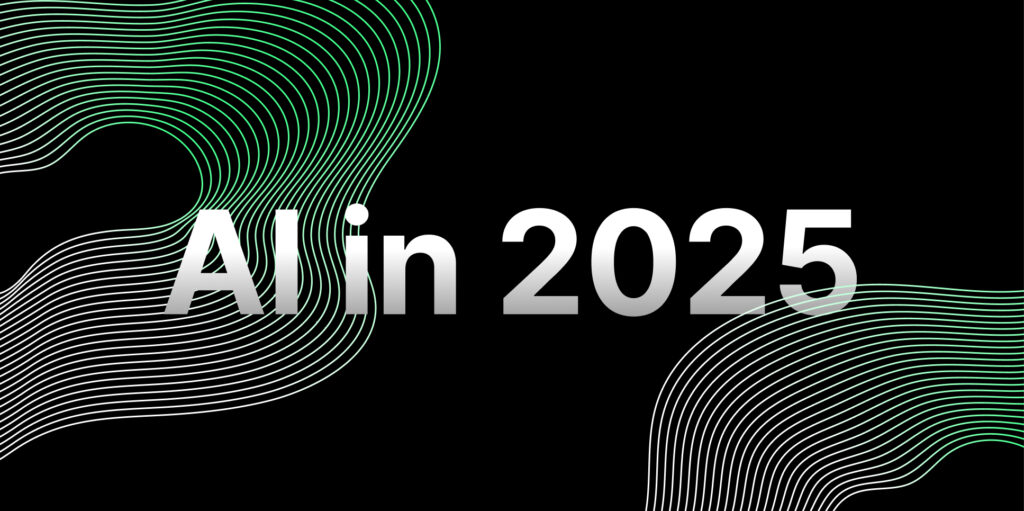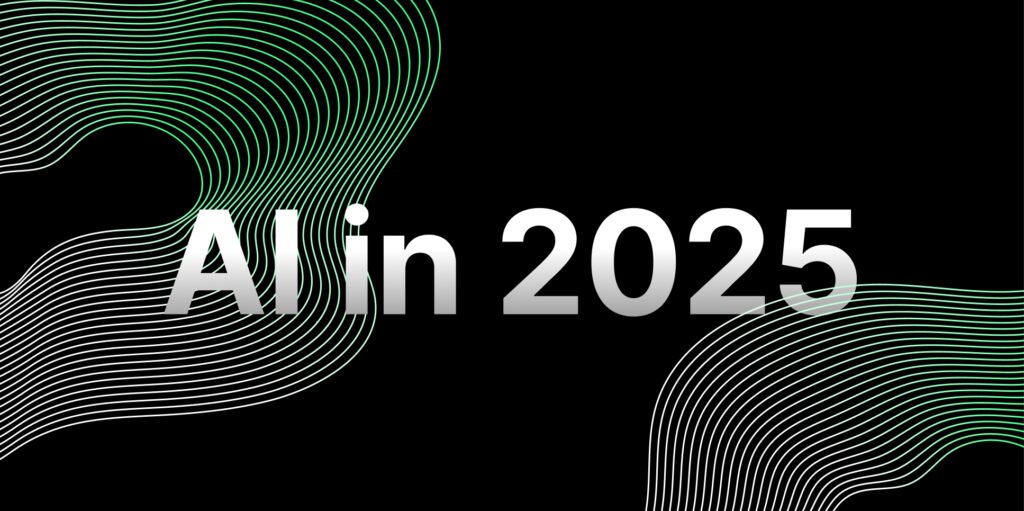2025: A New Horizon for AI



Introduction
By 2025, the field of artificial intelligence (AI) is expected to permeate virtually every aspect of modern life. Advances in AI agents, collaborative robotics, and new business methodologies will create significant transformations in the way people work, interact, and entertain themselves. Many analysts envision tighter regulations balancing the benefits of AI with ethical concerns such as privacy, fairness, and data security. At the same time, businesses are likely to grapple with higher operational expenses in maintaining premium AI services. This overview explores the key trends, industry-specific applications, and possible consequences of AI on global markets and societies.
The Growing Impact of AI Agents
AI agents are set to become an essential part of personal life and organizational operations. Capable of autonomous calculation, decision-making, and self-directed actions, these agents differ from older software by their dynamic learning and real-time adaptation. This sophisticated autonomy promises efficiency gains at individual and corporate levels, including automated data interpretation, daily schedule management, and enhanced customer interactions. Yet, it also introduces complexities regarding accountability—especially when AI agents make decisions that ultimately affect finances or personal privacy.
AI as a Competitive Advantage
Many businesses already see AI as a powerful source of competitive differentiation. Predictive analytics, language models, and task automation are pivotal in streamlining logistics, boosting sales, and refining strategic planning. By injecting AI into their sales pipelines, companies obtain deeper insights into customer demand and spend patterns, allowing them to tailor their products and ads more effectively. In service-oriented contexts, AI-based chatbots and recommendation engines enrich user experience by providing timely, relevant responses. While the tangible rewards beckon, this transition may come with elevated costs tied to computing infrastructure, specialized hiring, and ongoing AI training.
Escalating Operational Costs
Increased AI adoption—and the demand for ever more advanced systems—has caused operational expenses to soar. Training large language models (LLMs) requires massive data, immense processing capabilities, and frequent updates to keep pace with market changes. Premium AI solutions often rely on highly specialized hardware and software, leading to substantial expenditures each year. Smaller firms might struggle to meet these financial demands, potentially pushing them to explore niche applications or pursue alliances with larger businesses. Meanwhile, bigger players in the AI world invest millions to maintain their lead in areas such as neural network optimization and quantum-friendly computing.
AI and Robotics in Everyday Life
One of the significant developments predicted for 2025 is the deepening synergy between AI applications and robotics, reshaping how tasks are performed in day-to-day contexts. Instead of merely assembling cars on factory floors, modern robots equipped with advanced AI systems will collaborate with humans in fields as diverse as logistics, healthcare, construction, and personal assistance.
Enhanced Human-Robot Interactions
As AI gains the ability to interpret more complex data and contexts, human-robot interactions become increasingly seamless and life-like. These interactions can range from hospitality tasks—where robotic assistants handle repetitive chores—to health industries, where machines help with patient recovery or diagnostics. Voice recognition, environment mapping, and real-time adaptation dramatically improve how safely and efficiently robots operate. The public fascination with such developments is strong, but so are questions about ethics, transparency, and how to avoid unintended harm when machines make errors.
Regulation and Market Shifts
Nations around the world are grappling with how to regulate AI to ensure fairness, safety, and data protection. Stricter compliance rules aim to illuminate the “black box” effect of AI by requiring organizations to disclose how automated decisions are reached. Some governments have moved to address algorithmic bias, while others emphasize data privacy and accountability measures. Stronger regulations can boost public trust, though they may also pose barriers for businesses with limited resources.
Consolidation of AI Market Leaders
The robust capital and computing power required for AI development gives an advantage to major technology corporations, which can afford to train, deploy, and maintain large-scale AI systems. As smaller startups confront cost pressures, they may be acquired or forced into specialized niches to survive. The resulting environment could produce a smaller cluster of dominant AI leaders who define performance standards, set pricing models, and influence how the tech ecosystem evolves. This scenario stirs concern about reduced competition in AI, potentially stifling innovations from emerging players.
Industry Snapshots
Consumer Markets
Customer service and marketing innovations will rise significantly in consumer-facing sectors, aided by AI-driven chatbots, real-time analytics, and sophisticated pricing strategies. Retailers will likely see more rapid order processing and better personalization. Yet, many consumer-centric companies still haven’t laid the groundwork to exploit AI’s fuller potential in areas like product design or new R&D efforts.
Financial Services
Banks and fintech startups stand to benefit markedly from machine learning tools that track transactions, detect fraud, and even help customers negotiate personalized rates. Advanced data models can predict credit risks, identify investment opportunities, and delve deeper into insurance underwriting. At the same time, the operational cost of staying ahead—through acquiring the latest AI solutions—remains high, and financial institutions risk falling behind if they defer AI adoption.
Health Industries
Some of the largest strides in AI integration will appear in healthcare. Hospitals with AI-based scheduling and customer-service solutions will handle patient demands more efficiently, while pharmaceutical and medtech advancements should shorten the time needed to research and test new drugs. Regulatory bodies, though, remain watchful of how these technologies might threaten patient privacy or overstepping boundaries in clinical decision-making.
Industrial Products
Manufacturing companies capable of standardizing processes and implementing real-time analysis can accelerate R&D. They can also reduce mechanical failures by detecting anomalies early through AI-driven maintenance predictions. Those behind the curve, however, might devote much of 2025 to playing catch-up, leaving a wide gap between innovators and the rest of the market.
Technology, Media, and Telecommunications
AI modules built for existing platforms can extend software life spans and pave the way for targeted AI enhancements. Telcos, for instance, are exploring digital twin simulations, enabling them to optimize network performance and anticipate outages. Media enterprises turn to AI for content curation, automated editing, and engaging audience experiences—though these steps underscore the tension between innovation and creative authenticity.
The Human Factor and Ethics
Although AI reduces mundane workloads and quickens performance, the shift impacts human roles. Employees who once handled repetitive tasks may be replaced or reoriented toward AI oversight and strategy. Ensuring fairness in automated decisions demands scrutiny of possible algorithmic biases. Policymakers, civic organizations, and corporate leaders must jointly address these issues by creating guidelines that promote responsible AI innovation and guard civil liberties.
Conclusion
By 2025, AI’s rapid rise will redefine many aspects of life, creating opportunities for operational streamlining, personalized consumer offerings, and breakthroughs in fields such as health, finance, and manufacturing. The concurrent increase in infrastructure expenses, the consolidation of AI market leaders, and the introduction of stronger regulatory standards will influence how quickly and ethically AI gains traction across industries. For all stakeholders—business leaders, policy professionals, researchers, and the wider public—finding the right balance between technological competitiveness and public well-being stands as the defining challenge of this AI-empowered era.
